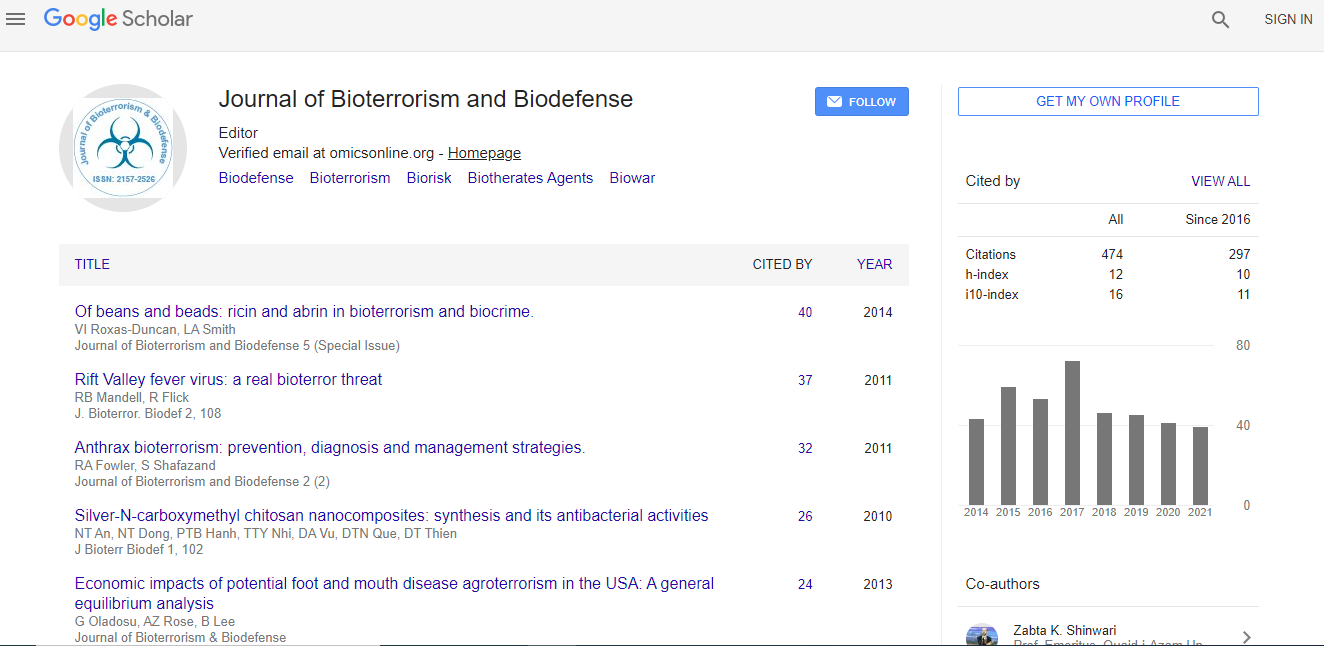Research Article
Development of an Algorithm for Calculating the Risk of Terrorist-CBRN
Bolduc DL1*, Marr J2, King J3 and Dudley R4
1Biodefense Program, Department of Public and International Affairs, George Mason University, USA
2Department of Computational and Data Sciences, George Mason University, USA
3Department of Mathematics, New Hampshire Community Technical College, USA
4Department of Political Science, George Mason University, USA
- *Corresponding Author:
- David L. Bolduc
Scientific Research Department
Armed Forces Radiobiology Research Institute (AFRRI)
Uniformed Services University of the Health Sciences
Bethesda, MD 20889
E-mail: david.bolduc@usuhs.edu
Received Date: April 28, 2012; Accepted Date: August 21, 2012; Published Date: August 24, 2012
Citation: Bolduc DL, Marr J, King J and Dudley R (2012) Development of an Algorithm for Calculating the ‘Risk’ of Terrorist-CBRN. J Bioterr Biodef 3:117. doi: 10.4172/2157-2526.1000117
Copyright: © 2012 Bolduc DL, et al. This is an open-access article distributed under the terms of the Creative Commons Attribution License, which permits unrestricted use, distribution, and reproduction in any medium, provided the original author and source are credited..
Abstract
In order to avert a disaster from a terrorist chemical, biological, radiological or nuclear (CBRN) attack, it is important to study the likelihood of terrorists using CBRN weapons. This study reports on the development of an algorithm for calculating the ‘risk’ of a terrorist seeking CBRN weaponry with 67.3 percent prediction accuracy. The algorithm was developed through four phases, Phase I proposed independent variables likely associated with Terrorist-CBRN (T-CBRN) derived from our interpretation of the literature; Phase II involved constructing a ‘Random Nations Matrix’ from 74 countries or locations of the world selected at random, for correlating the proposed independent variables; Phase III entailed the construction of a multivariate model from the independent variables which met our correlation criteria with T-CBRN; and finally in Phase IV, an algorithm was derived from the model design for calculating the risk of a terrorist seeking, acquiring and or using a CB

 Spanish
Spanish  Chinese
Chinese  Russian
Russian  German
German  French
French  Japanese
Japanese  Portuguese
Portuguese  Hindi
Hindi 